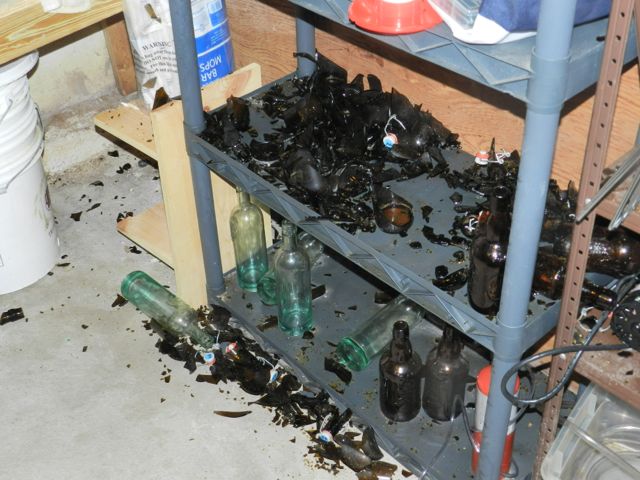Just Jacob
Member
I brewed some Pilsner and yesterday I primed and bottled my beer.
The big mistake I made was when using a priming calculator website to figure out how much dextrose to use, I forgot to convert it from Litres to Gallons. So I primed my pilsner for 22Gallons when it was supposed to be 22L, resulting in me using 280g of dextrose when I was only supposed to use 75g.
24 hours later (the time I'm writing this post) I've understood my error and I have quickly moved all of the bottles into my fridge to slow down the process. My fridge's tempurater is around 4C (+/- 1C).
What should I do to salvage my batch of pilsner and stop my glass bottles from becoming exploding granades.
I've heard to just leave it as the fridge would be cold enough to slow down the process. I've read to re-rack the beer into a carboy, but if I do that, what would the next steps be and the process after that, I've also read to just remove the caps and put tin foil over the bottle tops, if so, when do I re-cap them?
any help would be muchly appreciated.
Thank you so much.
The big mistake I made was when using a priming calculator website to figure out how much dextrose to use, I forgot to convert it from Litres to Gallons. So I primed my pilsner for 22Gallons when it was supposed to be 22L, resulting in me using 280g of dextrose when I was only supposed to use 75g.
24 hours later (the time I'm writing this post) I've understood my error and I have quickly moved all of the bottles into my fridge to slow down the process. My fridge's tempurater is around 4C (+/- 1C).
What should I do to salvage my batch of pilsner and stop my glass bottles from becoming exploding granades.
I've heard to just leave it as the fridge would be cold enough to slow down the process. I've read to re-rack the beer into a carboy, but if I do that, what would the next steps be and the process after that, I've also read to just remove the caps and put tin foil over the bottle tops, if so, when do I re-cap them?
any help would be muchly appreciated.
Thank you so much.




















































![Craft A Brew - Safale S-04 Dry Yeast - Fermentis - English Ale Dry Yeast - For English and American Ales and Hard Apple Ciders - Ingredients for Home Brewing - Beer Making Supplies - [1 Pack]](https://m.media-amazon.com/images/I/41fVGNh6JfL._SL500_.jpg)





